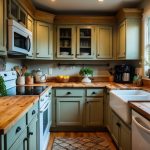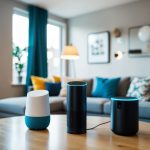Creating a Functional and Stylish Home Office: Top Design Tips and Ideas
A well-designed home office not only enhances productivity but also creates a space where working becomes enjoyable. By blending functionality with style, you can turn any corner of your home into an efficient workspace. Selecting the right furniture, lighting, and decor elements is crucial to achieving this balance.
Choosing ergonomic furniture ensures comfort during long hours of work, while the right lighting can reduce eye strain and fatigue. Adding personal touches, such as artwork or plants, can make the space more inviting and conducive to creativity.
Incorporate storage solutions that keep the space organized and clutter-free, making it easier to find what you need when you need it. Thoughtful design choices transform a mundane home office into a space that fosters productivity and well-being.
Evaluating Your Space and Needs
Choosing the right location, size, and layout for a home office depends on personal work habits and available space. It’s crucial to identify how the area can support productivity and comfort.
Determining the Location
The first step in creating a functional home office is identifying the best location within the home. Some may prefer a separate room to minimize distractions, while others might transform a quiet corner of an existing room.
Consider areas that are well-lit with natural light, as this can improve mood and efficiency. Avoid high-traffic areas or spaces prone to noise. Think about proximity to necessary resources, such as power outlets and internet connections. A well-chosen location can significantly enhance one’s work experience.
Assessing the Size and Layout
Once the location is chosen, assess the size and layout of the space. Measure the area to ensure that furniture and equipment will fit without overcrowding. Consider how much surface area is needed for tasks and whether there is enough storage for documents and supplies.
Think about the flow of movement within the space. There should be enough room to move comfortably without knocking into furniture. The layout should also facilitate an organized workflow, allowing easy access to essentials without causing clutter.
Understanding Your Work Habits
Understanding personal work habits is key to designing an effective home office. Some individuals require a substantial desk for multiple monitors or creative projects, while others might need a compact workspace with minimal distractions.
Consider how often breaks are taken and whether a comfortable seating area is needed. Identify equipment and tools that are used regularly and ensure they are readily accessible. The workspace should align with daily routines and habits, supporting productivity and comfort throughout the workday.
Designing for Productivity
Creating a productive home office starts with selecting ergonomic furniture, optimizing lighting, and incorporating elements that enhance focus and efficiency.
Ergonomic Furniture Selection
Investing in ergonomic furniture is crucial for maintaining comfort and productivity. Chairs with adjustable heights, lumbar support, and armrests help reduce strain on the body during long hours of work. Ergonomic desks that cater to standing and sitting positions provide flexibility and promote movement, minimizing the risk of health issues like back pain.
A well-designed ergonomic setup also includes monitor stands or arms, ensuring screens are at eye level. This prevents neck strain and promotes good posture. Choosing furniture that fits well within the space and allows for easy movement is essential for a clutter-free and efficient work environment.
Optimizing Lighting
Proper lighting is essential for reducing eye strain and enhancing focus. Natural light is ideal, so positioning the desk near a window is beneficial. Supplement natural light with adjustable LED desk lamps that provide adequate illumination without causing glare on screens.
Consider the color temperature of the lighting as well. Cooler light (blue-white) is known to boost alertness and concentration, while warmer light (yellow-white) creates a more relaxed atmosphere. Using a combination of both can help maintain a balance between comfort and productivity.
Curtains or blinds can help control the amount of natural light entering the room, reducing glare and distractions. Dimmable lights can also offer flexibility, allowing adjustments based on the time of day and specific tasks.



